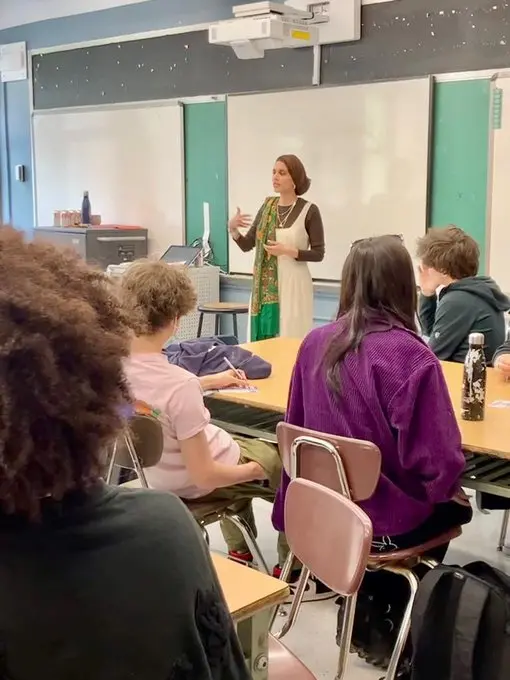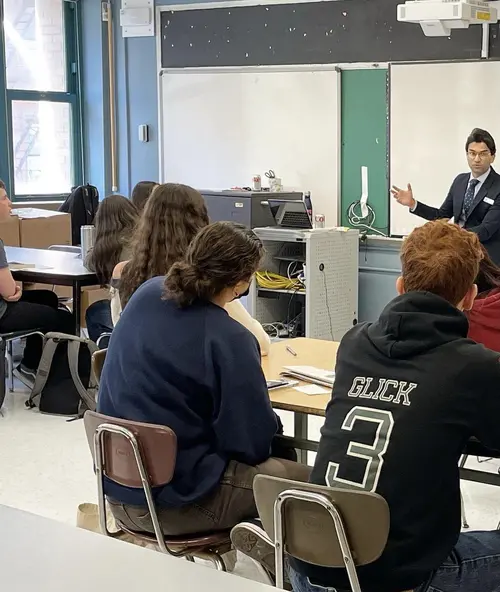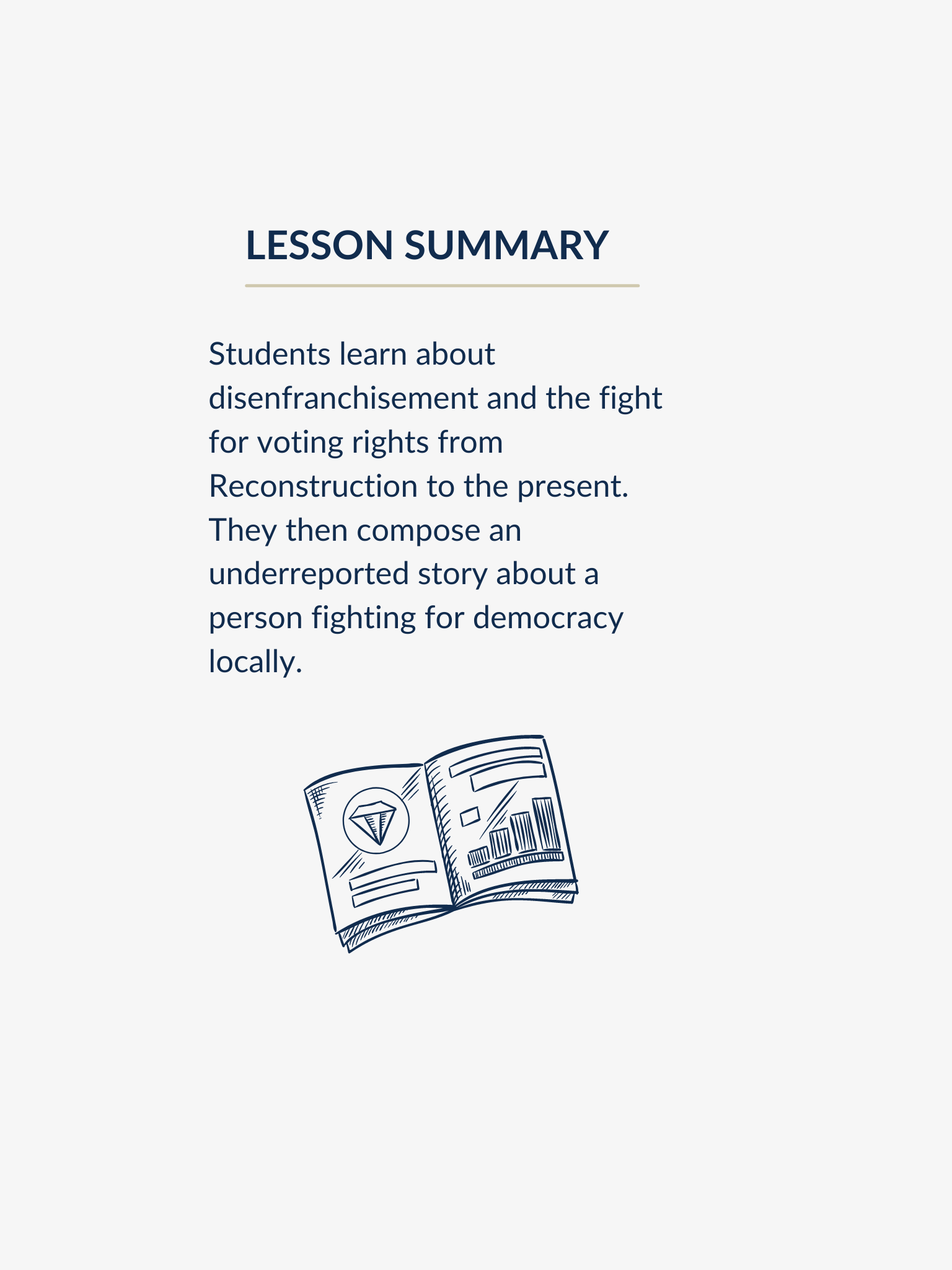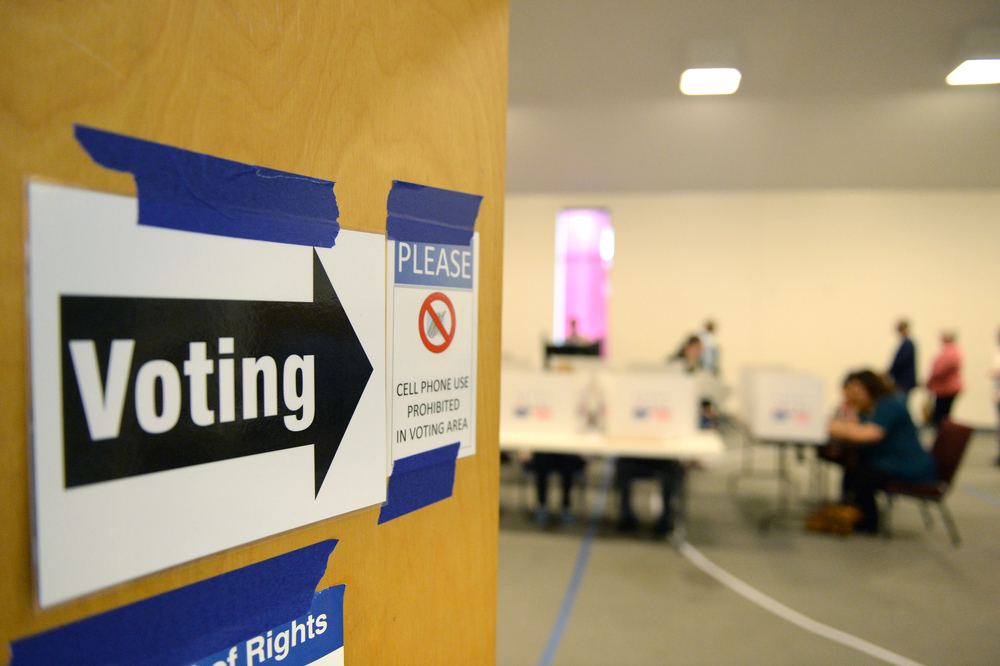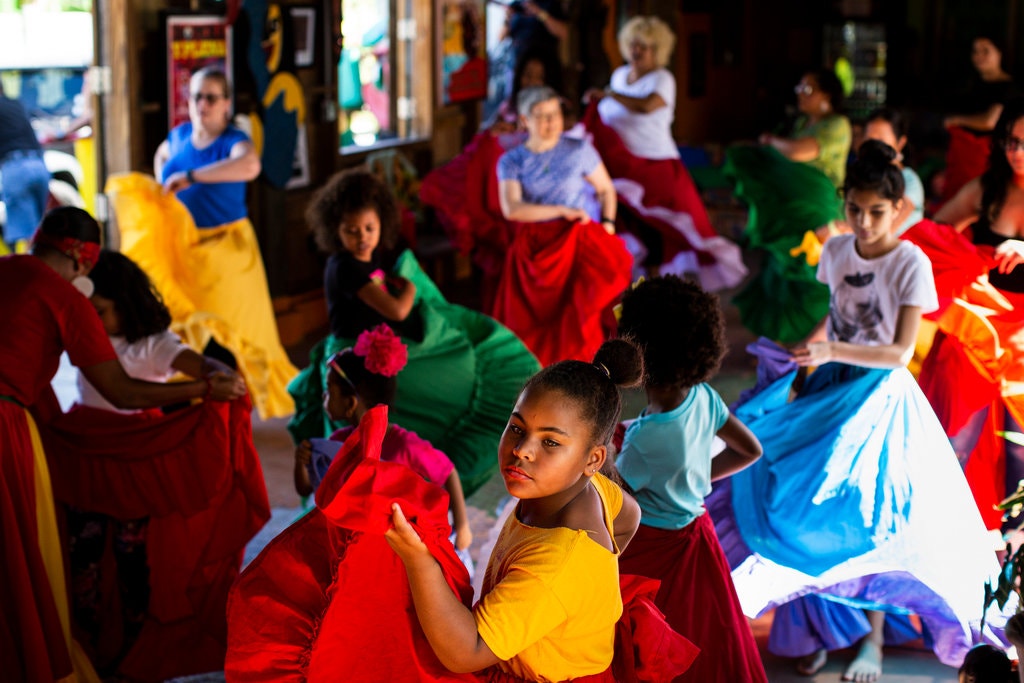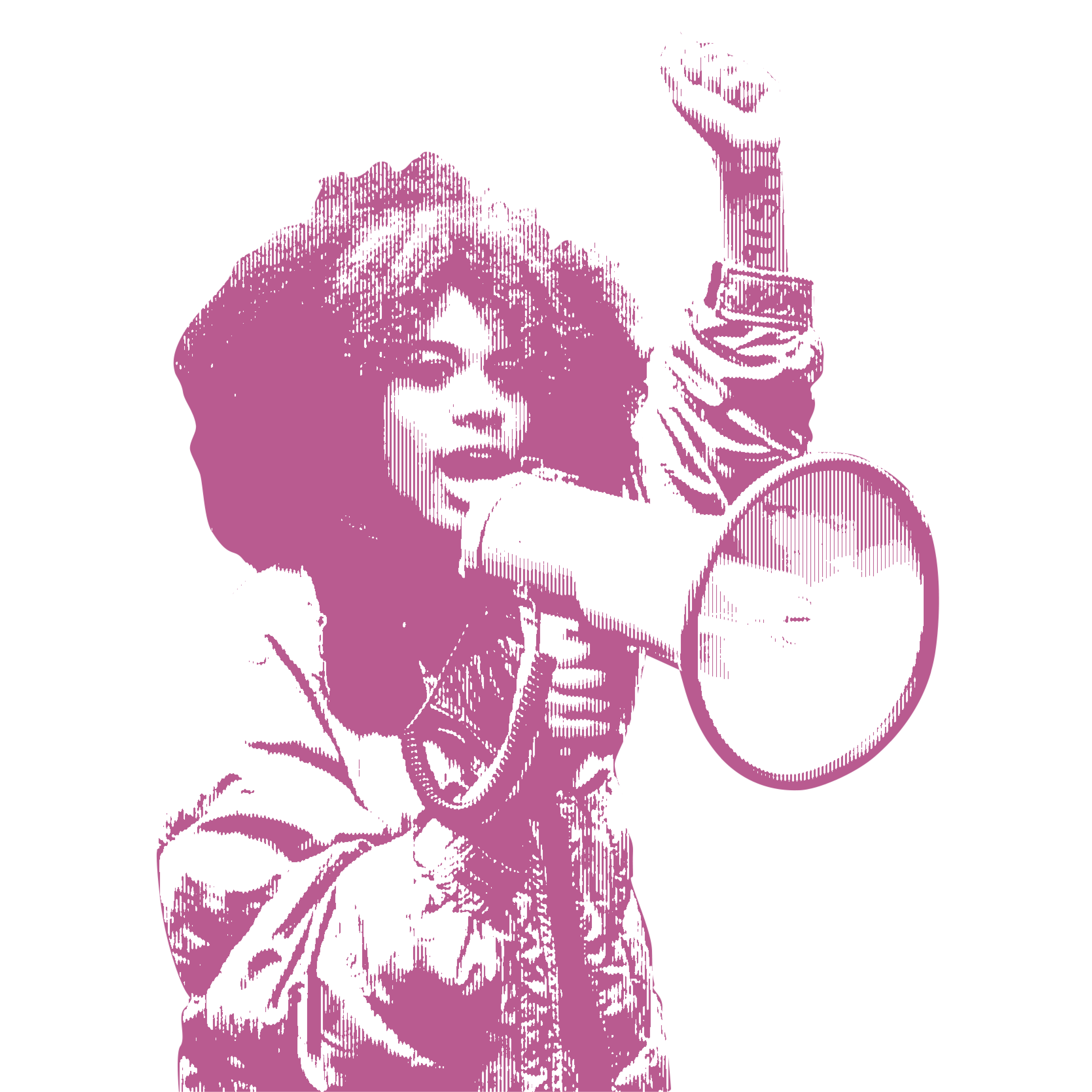This unit was created by Patrick Sprinkle, a high school Government teacher in New York, NY, as part of the 2021-2022 Pulitzer Center Teacher Fellowship program. It is designed for facilitation across three-four weeks, or approximately 17 lessons.
For more units created by Pulitzer Center Teacher Fellows in this cohort, click here.
Objectives:
Students will be able to…
- Identify ways that voting has been abridged in the past and present United States.
- Critically evaluate and highlight how members of their own community have resisted attempts to deny participation in our democracy.
- Explore the concept of an underreported story and examine the factors that cause it to be underreported.
- Learn the critical skills of questioning, presenting, and interviewing in the context of identifying and exploring an underreported story in their own community.
Essential Questions:
- How have citizens been denied their role in our democracy as voters in the past and today?
- How has our community resisted attempts from institutions to thwart our democracy?
- What is an underreported story and how can I find them in my community?
- How do I practice the reporting skills of identifying a subject, writing clear questions, and asking them?
Unit Overview:
In the U.S.’s complex and messy democracy, students may be understandably frustrated and cynical about the rate of change. Our public sphere is a hotly contested space in which the battle for the hearts and minds of voters takes center stage. Sadly, access to this sphere has been limited for many on the outskirts of the American dream. This unit seeks to explore the historical underpinnings of this contested space by examining how, in the past and the present, U.S. citizens have been denied the right to participate in this arena. As a means of celebrating and acknowledging the precarious path forward, students will highlight a story of resistance in their own community in a narrative format. The process of identifying a subject, developing a line of questioning and interviewing a subject, and composing a narrative to showcase academic work will be emphasized.
Prior to this unit, students should be familiar with the broader arc of U.S. history, including the long and impactful battles of those most marginalized to obtain the franchise. Generally, most students will have already taken 20th Century American History.
This unit will cover some of the earliest ways in which disenfranchisement occurred during Reconstruction and will bring us to the present day. Ultimately, students will be able to see a threadline to the present day while critically examining underreported stories of the past and present. As a means of resistance and liberation, students will compose an underreported story on their own of an activist in their community whose work they want to highlight.
Performance Task:
Students will identify, interview, and compose a narrative about a freedom fighter in their community who is resisting the subversion of American democracy in the present. The interviewed subject, likely an underreported actor, can be an activist, a voter or future voter, an educator, or anyone committed to democracy in their community. This task will highlight and draw a bridge between the skills of interviewing and formulating good questions with our school’s emphasized learning habits of reflecting and making authentic connections. Students will be asked to present their final work product in an academic showcase that provides an authentic moment to come together as a community to celebrate their shared learnings.
Seventeen-day unit plan, including classroom activities, multimedia resources, worksheets, and performance tasks for the unit.
Unit Resources:
Common Core Standards:
CCSS.ELA-LITERACY.RH.11-12.1
Cite specific textual evidence to support analysis of primary and secondary sources, connecting insights gained from specific details to an understanding of the text as a whole.
CCSS.ELA-LITERACY.RH.11-12.2
Determine the central ideas or information of a primary or secondary source; provide an accurate summary that makes clear the relationships among the key details and ideas.
CCSS.ELA-LITERACY.SL.9-10.4
Present information, findings, and supporting evidence clearly, concisely, and logically such that listeners can follow the line of reasoning and the organization, development, substance, and style are appropriate to purpose, audience, and task
CCSS.ELA-LITERACY.SL.11-12.2
Integrate multiple sources of information presented in diverse formats and media (e.g., visually, quantitatively, orally) in order to make informed decisions and solve problems, evaluating the credibility and accuracy of each source and noting any discrepancies among the data.
CCSS.ELA-LITERACY.SL.11-12.3
Evaluate a speaker's point of view, reasoning, and use of evidence and rhetoric, assessing the stance, premises, links among ideas, word choice, points of emphasis, and tone used.
CCSS.ELA-LITERACY.SL.11-12.4
Present information, findings, and supporting evidence, conveying a clear and distinct perspective, such that listeners can follow the line of reasoning, alternative or opposing perspectives are addressed, and the organization, development, substance, and style are appropriate to purpose, audience, and a range of formal and informal tasks.
Learning for Justice Social Justice Standards:
Learning for Justice Identity Standards
3. Students will recognize that people’s multiple identities interact and create unique and complex individuals.
Learning for Justice Diversity Standards
10.Students will examine diversity in social, cultural, political and historical contexts rather than in ways that are superficial or oversimplified.
Learning for Justice Anchor Standards
12. Students will recognize unfairness on the individual level (e.g., biased speech) and injustice at the institutional or systemic level (e.g., discrimination).
Learning for Justice Action Standards
17. Students will recognize their own responsibility to stand up to exclusion, prejudice and injustice.
How can I, all of 17 years old, shake a durable status quo that benefits from the maintenance of it? The answer of course is I cannot alone. We can produce tiny ripples of hope which will bring change.
J.Q., student in patrick sprinkle's class in spring 2022
Summative Assessment:
In this unit, students are challenged to identify, interview, and compose a narrative about a freedom fighter in their community who is resisting the subversion of American democracy in the present.
Some students in Patrick Sprinkle's spring 2022 completed this assignment as designed. However, due to COVID-19 outbreaks, students were given the alternative option to write a response to the following prompt: How can you/have you brought democracy to our school community?
See below to read some examples of students' responses to this prompt, which discusses their experiences bringing candidates for elected office into the classroom, participating in voter registration drives, and working in student journalism.
